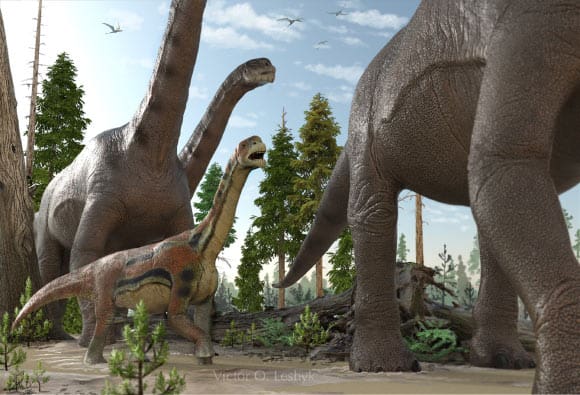Plant-eating sauropod dinosaurs were ecosystems engineers, profoundly changing their environments by knocking down trees and eating high volumes of vegetation. Following the end-Cretaceous mass extinction about 66 million years ago, the forests grew back thicker, blocking the Sun from reaching the ground layer, which, many generations later, led to the growth of large seeds and fruit; in time, these fruits became a primary food source for many animal species, including our primate ancestors. New research led by Northern Arizona University scientists provides mechanistic evidence in favor of this theory.

Support authors and subscribe to content
This is premium stuff. Subscribe to read the entire article.
Login if you have purchased
